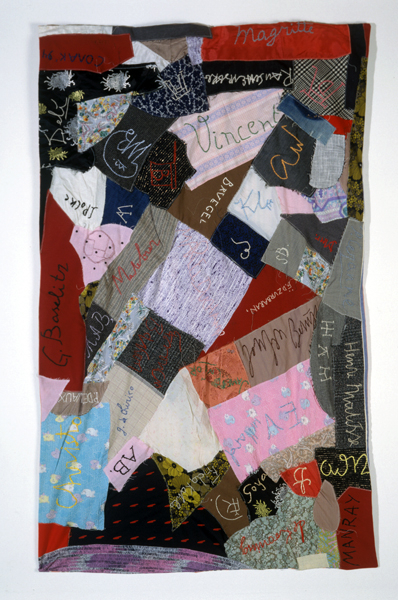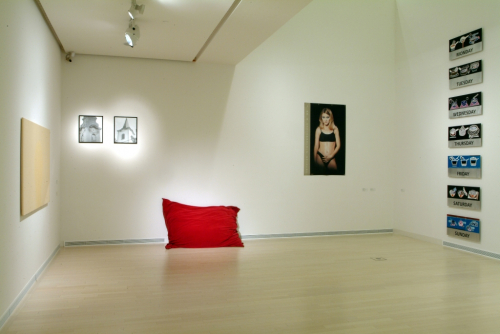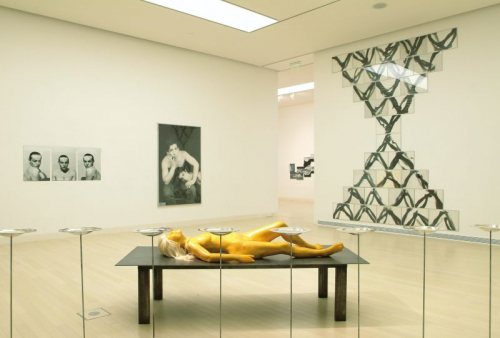Nedko Solakov’s installation The Collector of Art, which was an African tribal hut, full of valuable artefacts from the museum, was first shown in Ludwig Museum in 1994. The protagonist is a “black man,” – the artist’s alter ego – an admirer of western culture who lives somewhere in Africa, and has hoarded the works of famous artists in his hut. The passionate collector offers his own precious “currency” for the coveted pieces – rare cattle bones, coconuts, spots on giraffe skins –, takes his afternoon naps under a blanket embroidered with the names of great artists, and he is happy to use voodoo when it comes to tackling competing collectors (Saatchi, Thyssen-Bornemisza, Ludwig). The Collector of Art was the first among those post-conceptualist works in which Solakov adopted the perspective of a non-western, exotic, “black man” to explore the material and spiritual value, as well as the iconic significance, of works of art – and collections – that represent western culture. Solakov investigates the real value of the work of art when he removes it from its safe museum environment, and looks at it through the eyes of a great, imaginary collector, whose principles are not what we are used to. The quilt, which bears the signatures of prominent figures in the history of Western art (Brugel, Goya, Cézanne, Malevich, Duchamp, Rauschenberg, Joseph Beuys, Baselitz, etc.), was made by the artist’s wife, Slava, just like the chieftain’s wife in the fictional story.
Krisztina Szipőcs


